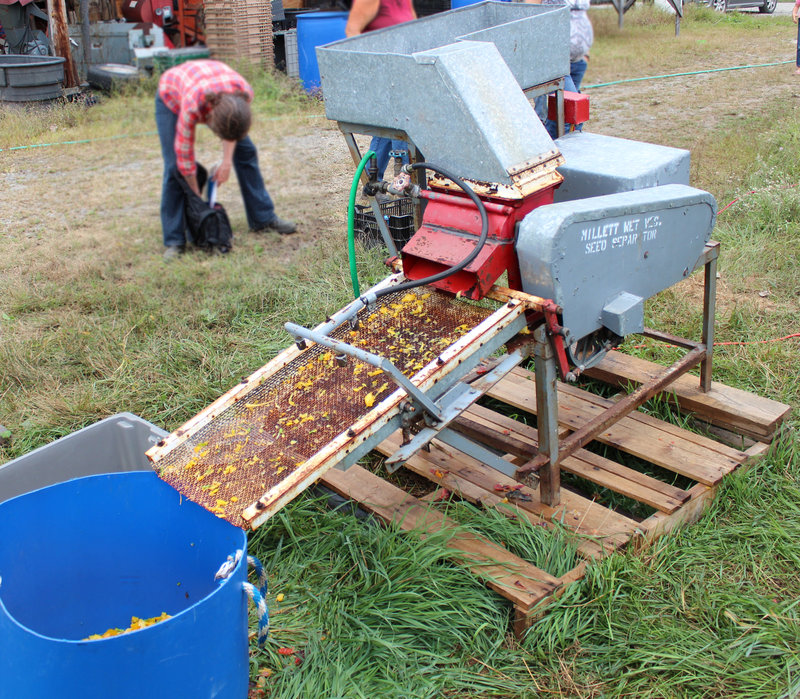Back to September 2015 Newsletter
Field trip to High Mowing Organic Seeds

Paul Hrycyk
Earlier in September I was lucky to be able to join members of Vegetable Seed Producers Network from Ontario and other seed growers and farmers from Quebec and Eastern Canada for a visit and tour of High Mowing. It was an invaluable opportunity to learn about large-scale organic seed production.
After a warm welcome, a cup of coffee and a quick walk through the warehouse, we drove up the hill to make our first stop at the trial field. Before any variety goes into commercial production it inevitably spends a year or more growing in this field, where it is rigorously assessed for plant and growth characteristics, yield, taste, disease resistance, uniformity, and an array of other criteria to determine its suitability for market gardeners and farmers.
If a variety doesn’t pass the trial stage – such as, for instance, the peppers we saw that produced fruits that weren’t uniform enough – the growers go back to selecting and rogueing the seeds further to improve the variety. It then goes back into trials, and then to commercial production.
Years before you’d see a variety in the trial field, it may already be putting down roots in the breeding field, under the watchful eye of Jodi Lew-Smith, the breeding coordinator at High Mowing. Jodi’s job is particularly important because High Mowing operates their own breeding program and works with universities to release new varieties. While some of the technical aspects of what this entails went over my head, it was very clear that developing and releasing new varieties is something High Mowing takes seriously and considers a key aspect of their business.
Once we had seen the fields (and the large pollinator hedges between them!), we moved on to the wet and dry seed cleaning areas. Anyone who has grown peppers or tomatoes for seed would appreciate the first piece of equipment we saw. Here's how it works: fruits go in one end, are pulverized by rotating blunt blades, fall onto a vibrating screen, and are rinsed with water. The seeds fall through the screen into a separate bucket where they can be fermented or decanted. In the ten minutes we stood watching this masterpiece, a recycling bin full of peppers yielded a small bucket of clean seeds. Impressive.
There were also other, larger machines for cleaning cucurbits right in the field, and a workshop full of both simple and complex machines for dry seed cleaning. I could write an entire article about the amazing machinery at High Mowing.
Before the day was over we saw the quality assurance area, the germination testing room and chambers, the seed packing area and storage facilities. By the end of the tour we left with a very good sense of what happens from the time a variety is planted to when it leaves the building in a seed packet.
A big thank you to Tom Stearns, Jodi Lew-Smith, and the rest of the team at High Mowing for hosting us and putting on such a fascinating and informative day. And an even bigger thanks to Aabir Dey, the Ontario regional coordinator for the Bauta Family Initiative on Canadian Seed Security, for organizing the tour and making it all possible. I have no doubt that everyone who attended got a lot out of this field trip.
**
Paul Hrycyk is the project coordinator of the Vegetable Seeds Producers Network.
Not yet a member?
An annual membership to Seeds of Diversity gives you access to our seed exchange, seed grow-out programs, and our online news.

We depend on donations to do our work.

Thank you for your support!
